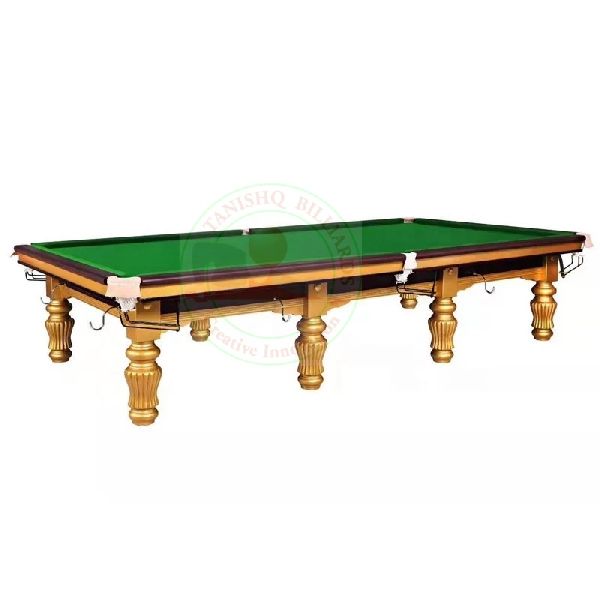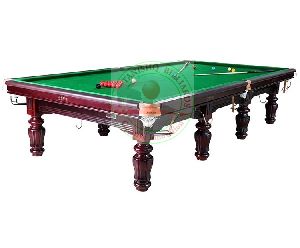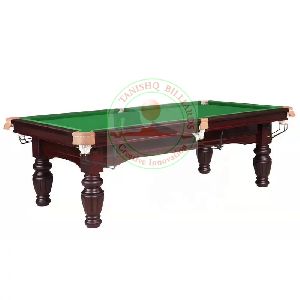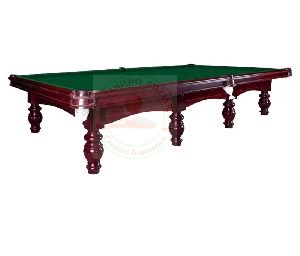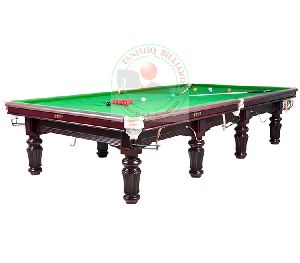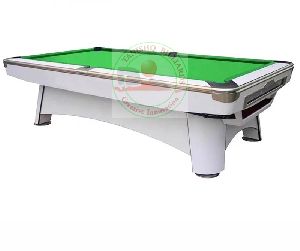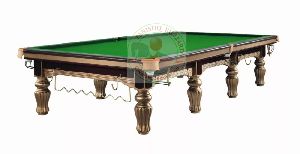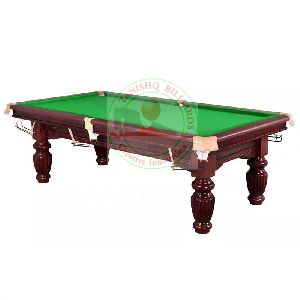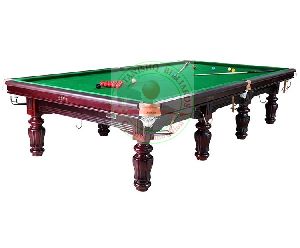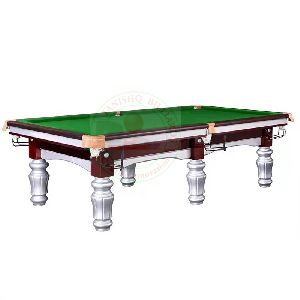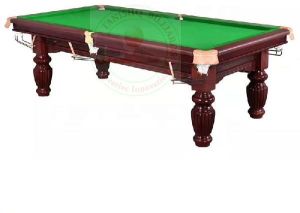Rohini, Delhi
- GST NO. : 07BPZPM1754G1ZD
| Business Type | Manufacturer, Exporter, Supplier, Retailer, Distributor, Importer |
| Material | Metal, Wood |
| Shape | Rectangular |
| Style | Antique, Common, Modern |
| Click to view more | |
Preferred Buyer From
| Location | Worldwide |
Product Details
English Billiards Table, called simply Billiards in Great Britain, where English Billiards Table originated, and in many former British colonies, is a cue sport for two players or teams. Two cue balls (originally both white and one marked e.g. with a black dot, but more recently one white, one yellow) and a red object ball are used. Each player or team uses a different cue ball. It is played on a English Billiards Table with the same dimensions as a snooker table and points are scored for cannons and pocketing the balls. English billiards has also, but less frequently, been referred to as "the English game", "the all-in game" and (formerly) "the common game".
More About Information for English Billiards Table
- English billiards was originally called the winning and losing caram bole game, folding in the names of three predecessor games, the winning game, the losing game and the caram bole game (an early form of straight rail), that combined to form it.
- The winning game was played with two white balls, and was a 12-point contest. To start, the player who could strike a ball at one end of the table and get the ball to come to rest nearest the opposite cushion without lying against it earned the right to shoot for points first. This is the origin of the modern custom A player who pocketed the opponent's ball scored two points, as is still the case in modern billiards.
- Fouls (or faults): A player missing the opponent's ball added one point to his opponent's total; the shooter conceded two points if that player's own ball (then acting as the cue ball) went into a pocket after striking the opponent's ball; and the player conceded three points if the cue ball was pocketed without even hitting the opponent's ball. These rules continued to exist in English billiards until 1983, when a standard two points for all fouls was introduced.
- By contrast, in the losing game a player could only score (2 points) by pocketing the cue ball through a carom off the opponent's ball. "Winning hazard" and "losing hazard" are terms still mentioned in the official rules for these two fundamental shot types, although "pot" and "in-off" have become the colloquial terms for them in British English.
- The final element was the cannon (or carom) shot, which came from carom or caram bole billiards, a three-ball variant popular in Western Europe. The carambole game added a red object ball to the two white cue balls, with the object being to carom off both the red and the opponent's ball on a single shot, earning 2 points.
- There are a number of pocket billiard games directly descended from English billiards, including bull dog, scratch pool, thirty-one pool and thirty-eight. English Billiards was virtually unknown in the United States until 1913, when Melbourn Inman visited the US and played the game against Willie Hoppe. By 1915 the game had become rather popular, prompting billiard hall proprietors to increase the number of English-style tables in their establishments.
Looking for "English Billiards Table" ?
Explore More Products


